For years, I wanted a bigger garden than my tiny little 4 x 6 patch. I got caught up in decision paralysis, but my biggest quandary was where would I put a bigger garden? I didn’t feel like I had the ideal spot on a small suburban lot with a wide, shallow, angled and sloped yard. If you’re thinking about starting a garden, here is what I did to create my garden from scratch.
Garden Location
Make sure that the spot you choose gets plenty of sun. You will need anywhere from 4-8 hours of direct sun, depending on what you will grow. Fruiting vegetables will need the most sun, root vegetables in the middle and leafy greens need the least sun.
Consider your fencing needs. We have many deer at my house and a deer fence is a must as our entire yard is not fenced.
I finally decided on the corner of my yard, mainly because I was tired of waffling on the decision and I could have landed on any spot. However, my reasoning was that this spot is where our back fence and neighbor’s fence meet, thereby offering two sides for a deer fence. The other reason is that the area is more visible when we are outside and I thought I would be more in tune to what was happening with the garden if I could see it. My old garden is on the side of the house not visible from anywhere we congregate—the front yard, the driveway, the patio, the deck, etc.
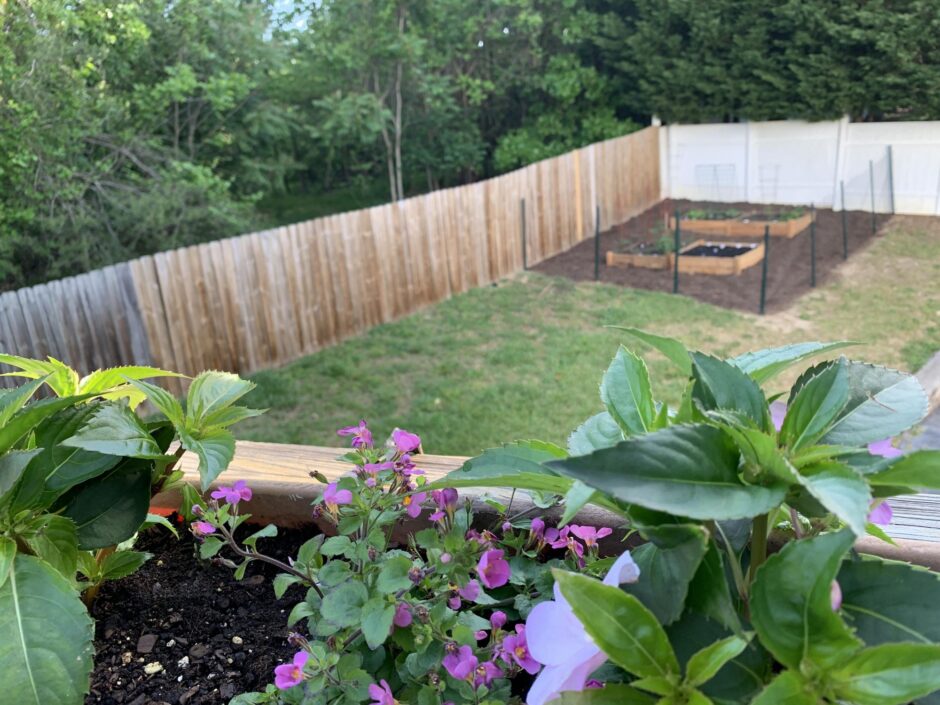
Part of the problem with my indecisiveness was that I wanted a pretty garden, not just a functional one. I don’t love that the fences don’t match (my back fence and my neighbor’s bright white fence) and that my driveway borders one side of my garden. I let the perfect garden in my head prevent me from creating one for so long. Seriously, don’t let perfection be the enemy of progress!
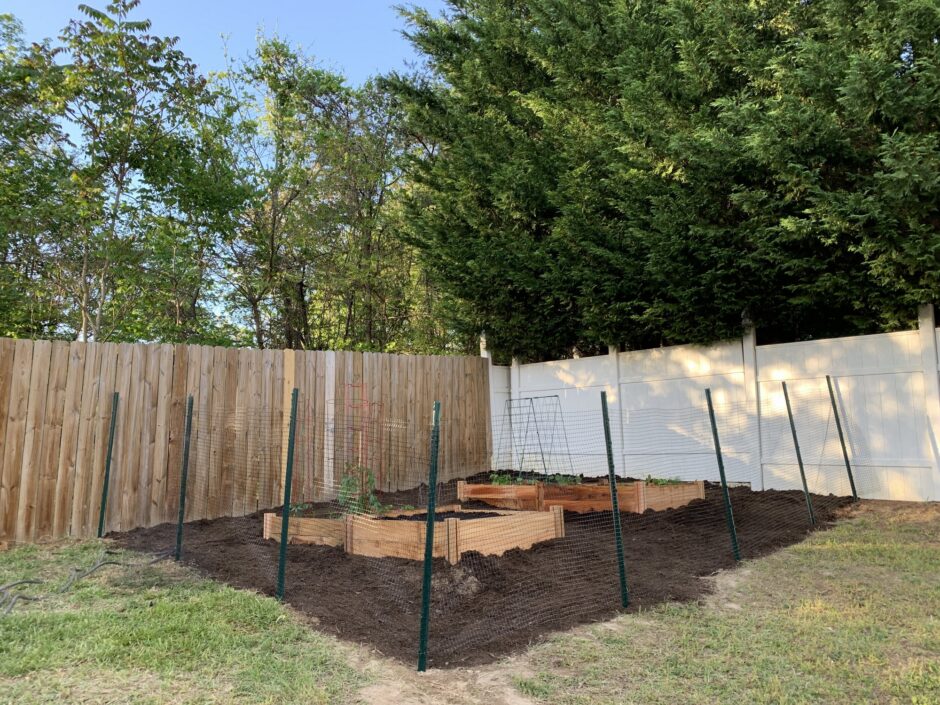
Raised Beds or In Ground Garden?
I had decided after doing some research that I wanted raised beds. I have extremely hard clay soil which makes digging quite cumbersome. Having raised beds with the proper soil makes digging and planting tremendously easier.
Raised beds make weeding super easy, too. My yard is pretty much one big weed. I really didn’t even have any weeds in my raised beds. If I had, they would have been easy to pull.
Another advantage of raised beds is that you don’t have to bend down so far to tend your garden. Mine were only 13″ high, but every bit helps.
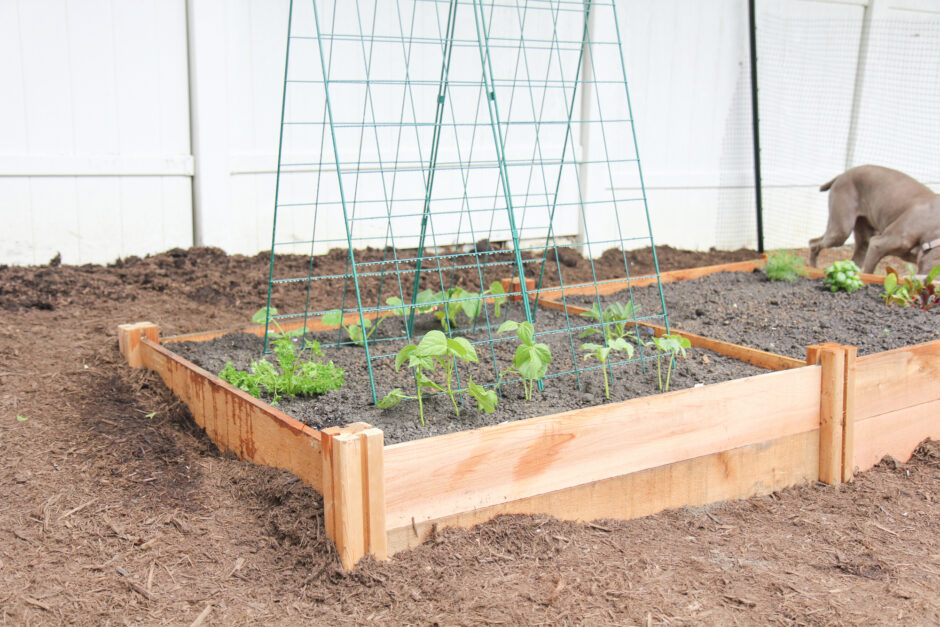
There are so many ways to make your own raised beds, but because I choose to do everything organically, I felt like I had fewer options that wouldn’t cost a fortune. You can use regular pine lumber, but it would rot quickly. You can use treated lumber, but I didn’t want chemicals leaching into my soil. I could buy cedar or redwood and make my own, but at the time, for me, it was cheaper to buy premade red cedar beds.
For 2021 and my garden expansion, I plan to keep my raised beds, but I will be planting in ground this time. I love the raised beds and if I had unlimited space and money, I would 100% only use raised beds. However, I can maximize growing space with the new expansion of my garden and make use of every square foot possible by doing in-ground beds. I plan to till once this time and then amend the soil.
Size
I came up with the size by deciding to buy two 4×8 raised beds and mapped out my area leaving 4 feet all around the beds. I feel like this was ideal, especially in the middle of the growing season when plants were spilling out on all sides. This gave me plenty of room to get around with my wheelbarrow. However, you could probably get away with 3′ instead or 2′ in some cases. My garden is 16′ x 20′ total.
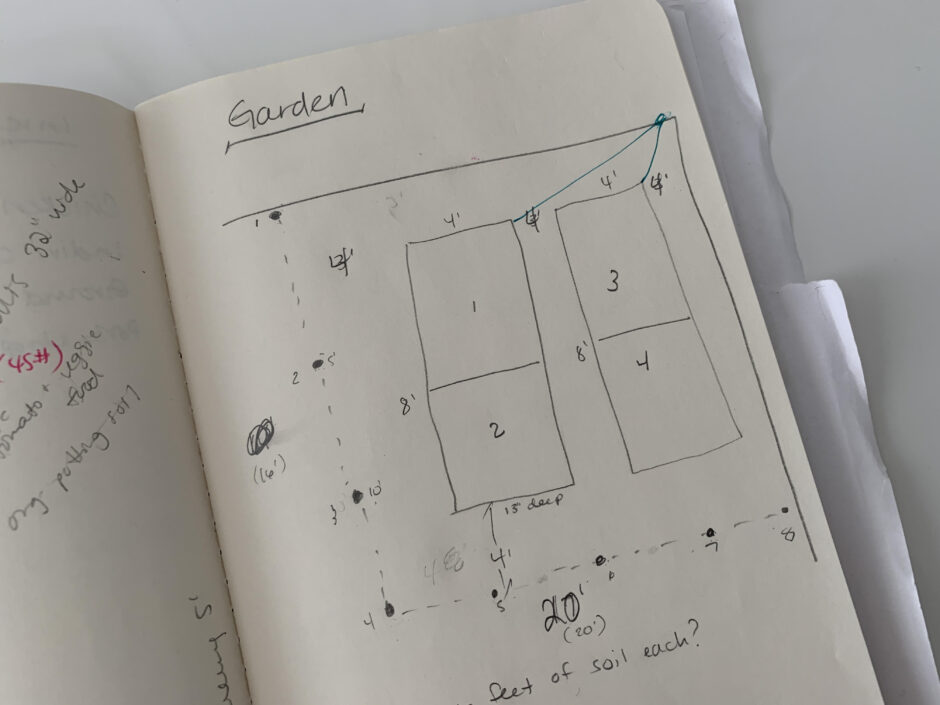
Preparation
To prepare for the garden, it took some old-fashioned hard work. In mid-April the whole family went outside, and we started shoveling and hoeing away. We had to clear grass from 320 square feet. It was hard work. We would dig up clumps of grass (weeds) and then shovel them into the wheelbarrow. Then, we dumped the weeds in a wooded area of our property.
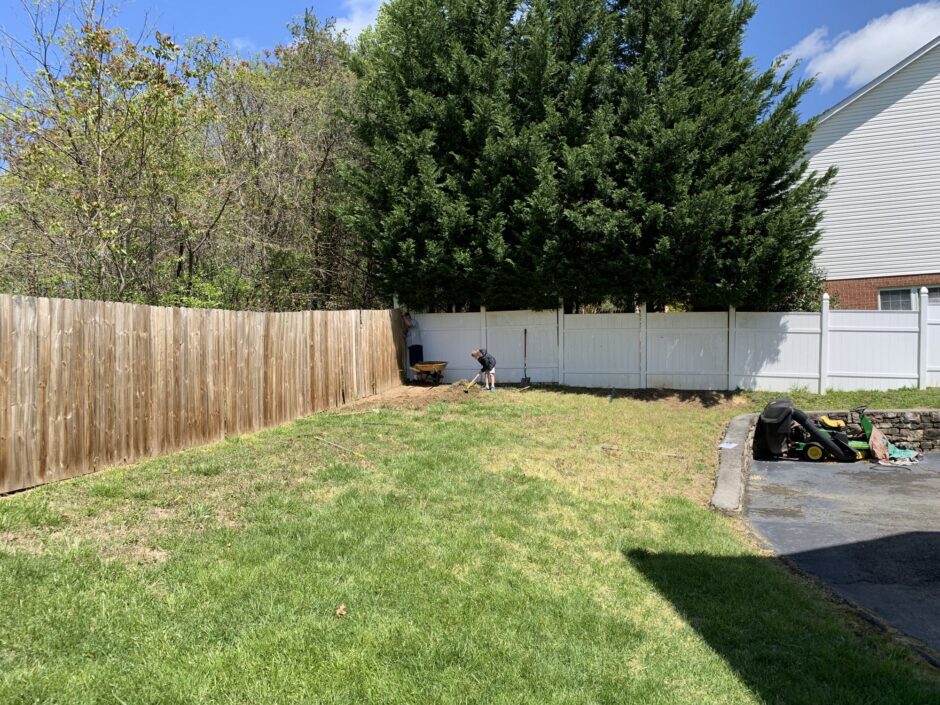
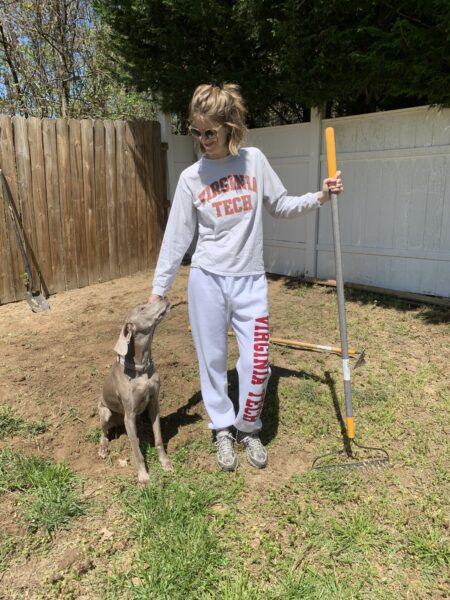
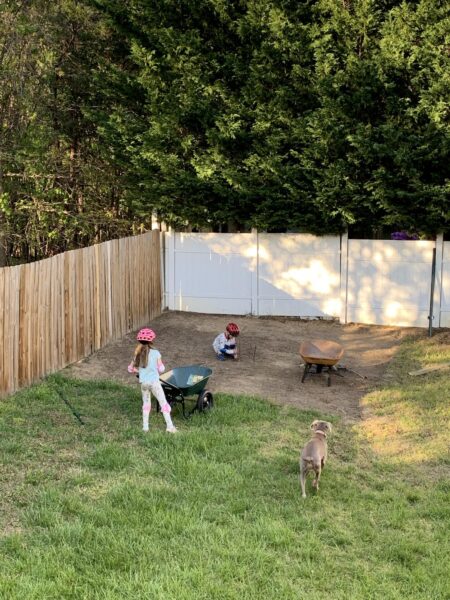
dfgfGarden Installation
There are several facets to the installation: 1) the raised beds themselves 2) the soil 3) the plants 4) mulching 5) fencing
Installing the raised beds
I let my husband be in charge of this. The cedar beds that I bought were easy to put together — the pieces slide into the corner supports. The part that made this challenging was that we were putting them on a slightly sloped portion of our property. At first I thought we were going to level the entire 16×20 garden area, but that is not what we did. My husband put them in place and then dug out an area on the high side to situate them to be level. So, we had one side that was dug into the earth, thereby making it more shallow.
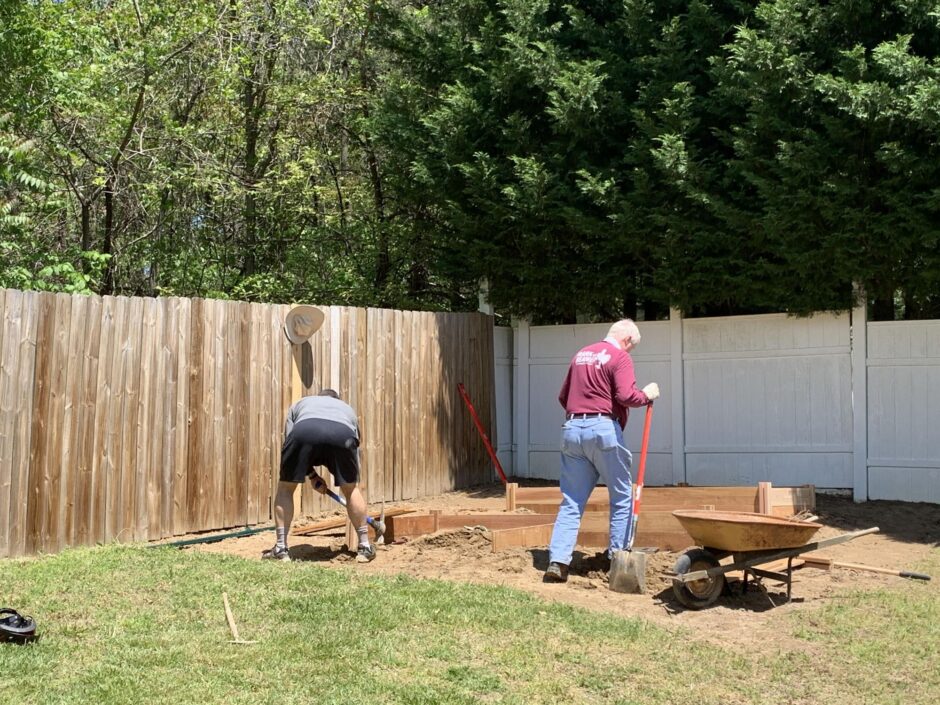
The soil
This is very important. The soil is the most important part of your garden and if you do this right, you will save yourself lots of heartache down the road. We were starting from scratch here and got a topsoil mix from our local nursery which was 60% topsoil, 30% compost and 10% potting mix. If I had had more time and had known more at the time, I would have spent a little more time on this, but it worked out just fine for me.
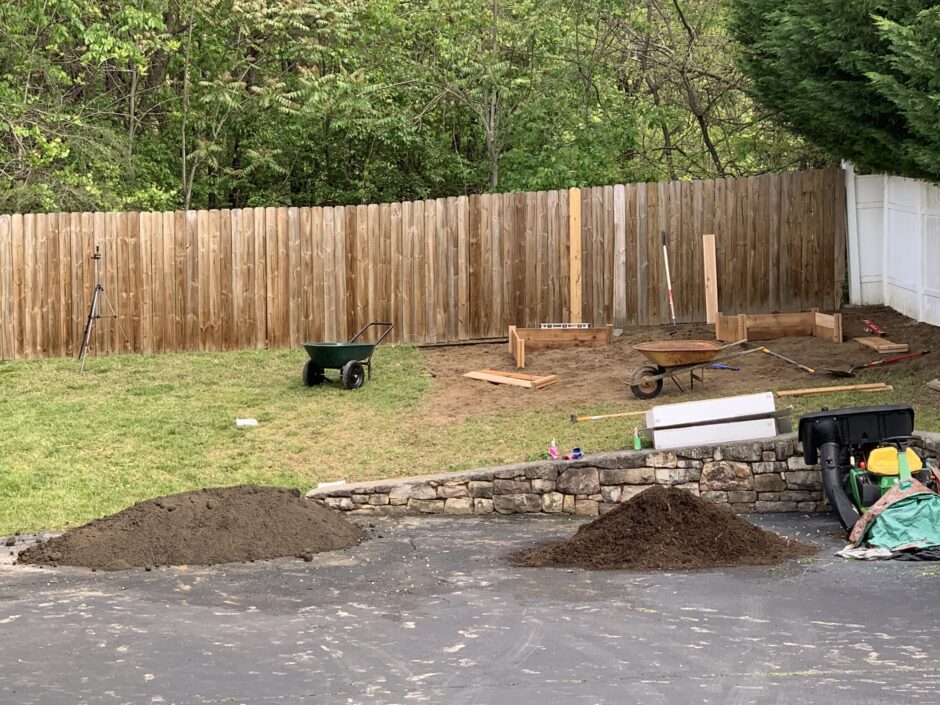
To determine how much soil you need, you have to calculate the following:
Length of bed x Width of bed x Height of bed = ____ Cubic Feet
4′ x 8′ x 1.08′ (13″) = 34.56 cubic feet
You can also use a online soil calculator.
I determined that I needed 35 cubic feet per bed, so 70 for both. My nursery sells the topsoil by the scoop, which is 33 cubic feet, so I ordered two and then added several more bags of compost to make up the difference.
When we ran out of the topsoil mix for my last bed, I added the bags of compost to this bed to fill it up, so it had more compost than the other three. The soil here was darker, more pliable, drained better and held moisture better.
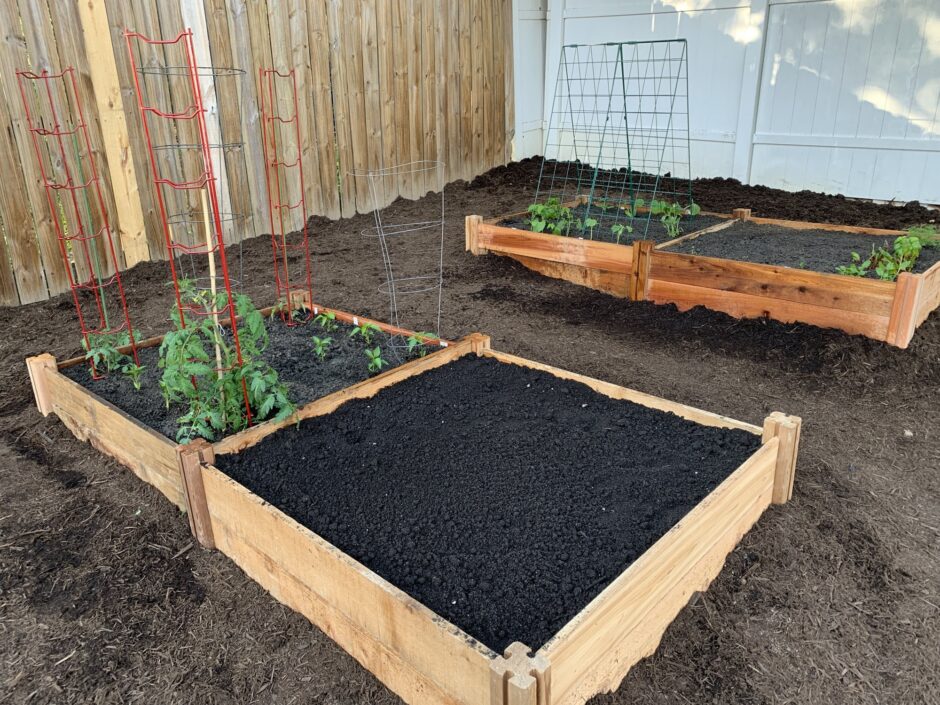
The plants
Ah, the plants — I could write pages and pages about how and why and what and when to plant and I will eventually. I recommend choosing plants based on what you like to eat and then buy those plants at your local nursery. If you’re just getting started or if you don’t have much space, I also would suggest planting vegetables that are continual producers, rather than one and done types of veggies like broccoli. A tomato or pepper plant will give you a huge harvest over a large period of time whereas a broccoli plant takes up a lot of space and gives you one head of broccoli. That’s not an effective use of space for a small kitchen garden.
Consult a planting guide to know when to plant your vegetables. You can check with your local extension service or google your hardiness zone + planting guide. I’m in 7A, so I would search “7A planting guide.” Here is my local extension service’s Zone 7 planting guide. If you don’t know your zone, go here to find out.
Make sure you know what a mature plant will look like and needs before planting. If you are planting tomatoes, make sure you can cage them or trellis them. If you are planting squash make sure you have a large area for a large plant or you can trellis it. Make sure not to plant small plants where they will be shaded out by larger ones.
Finally, if you can, spend some time looking at what shouldn’t be planted near one another and which plants are great companions. You can drive yourself crazy with this, but just give it a look to keep in mind.
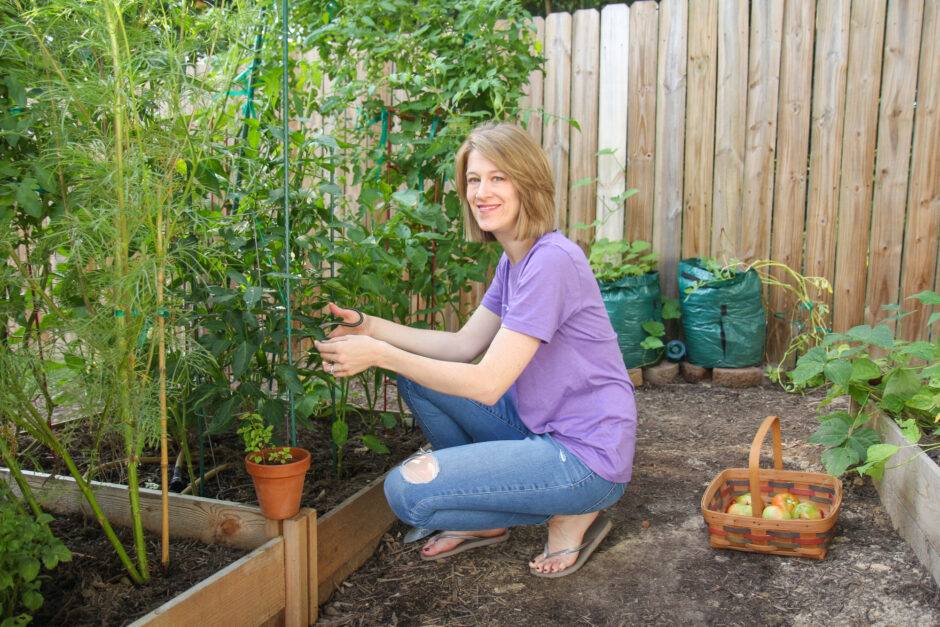
I could have spent a lot more time researching all of this before I planted for the first time, but I felt like I was late getting started in May and I just wanted to get plants in the ground. Thankfully, that trumped what could have been decision paralysis for me again.
Mulch
The final step was mulching around the beds. I wish that I had put down landscaping fabric first in the areas between the beds. Weeds were not a huge issue, but an issue for sure.
I did not put fabric down underneath the beds themselves because my raised beds are not very deep and I wanted to give the plant roots more room to grow. I figured that was more important than weed prevention and I didn’t end up having any issues with weeds in the beds, so I am happy about that decision.
Later, after everything was planted, we mulched the beds themselves as well. Initially, this wasn’t the plan. I used to mulch my in ground gardens, but didn’t think I would need to mulch the raised beds for some reason. I was wrong. Mulching the beds helps prevent weeds, hold in moisture, helps temperature regulation for the plants and it helps protect your plants from disease.
I learned the hard way after a period of torrential rain. When it rains, water splashes up from the soil and too much water can cause fungal and other diseases. Mulch will help protect your plants.
BEFORE – no mulch, muddy mess:
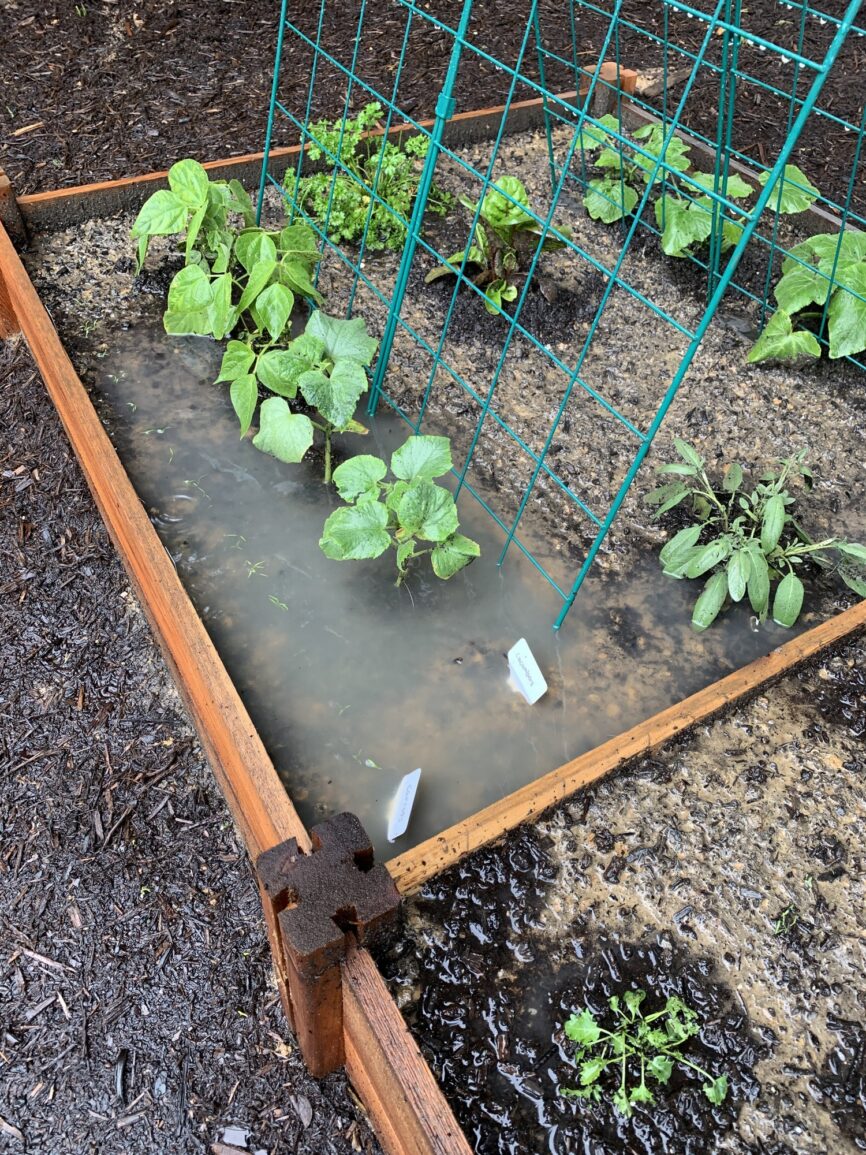
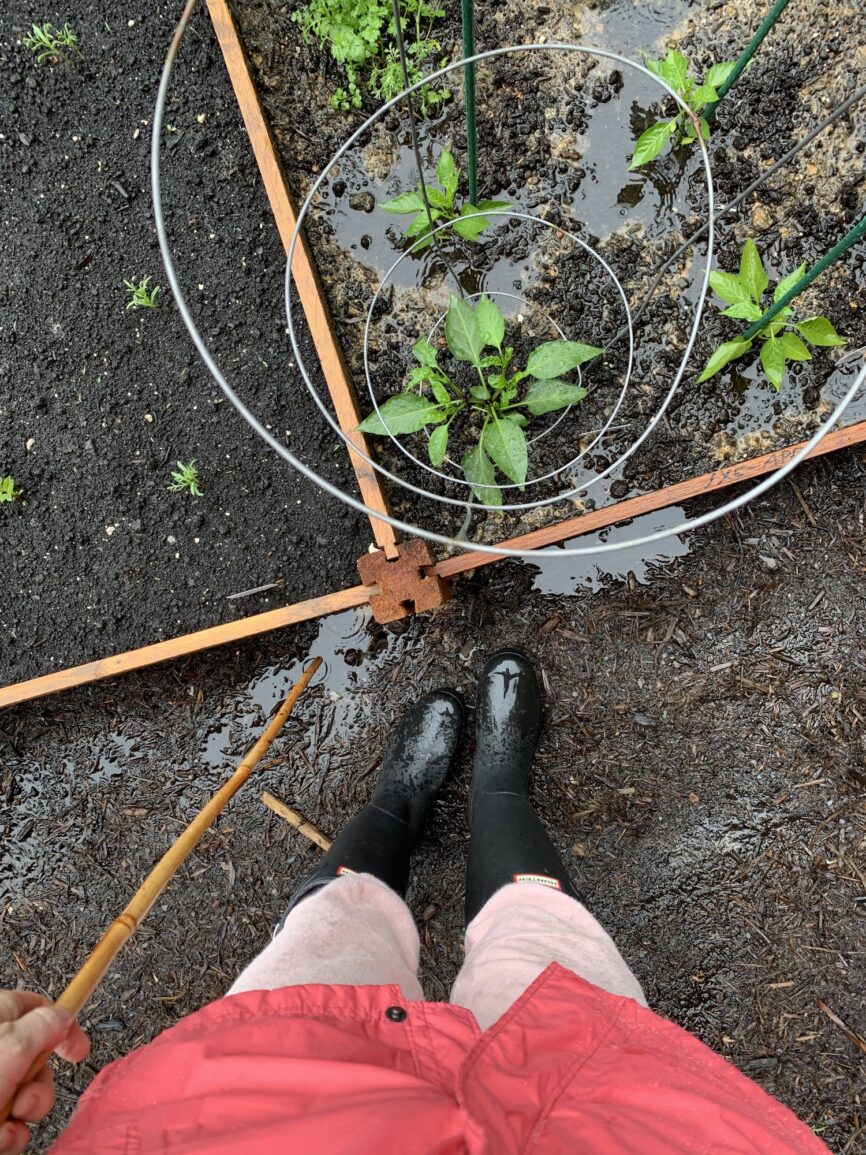
AFTER – mulched:
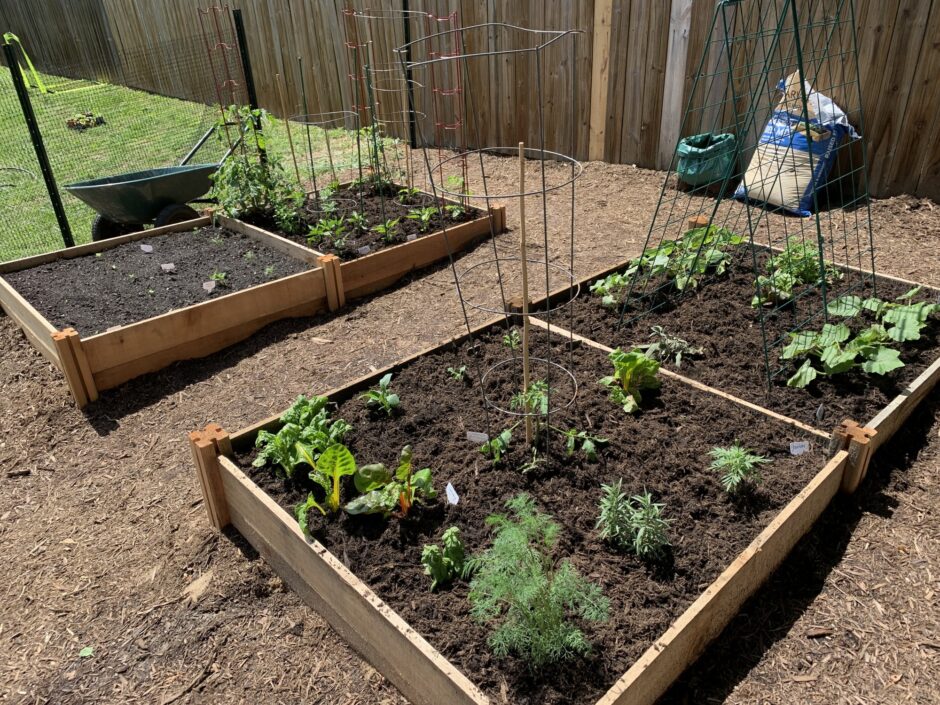
Fencing
We opted for a simple and cheap deer fence. Two sides of the garden are already enclosed so we used T bars and plastic mesh netting for the other two sides.
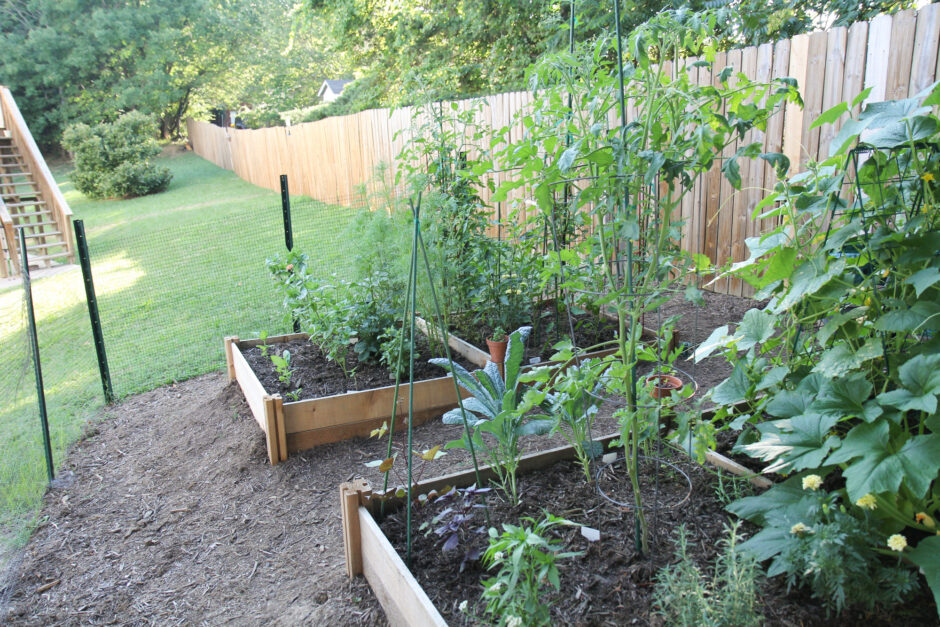
Conclusion
I made tons of mistakes, but they caused me to learn so much. Most of my mistakes weren’t a big deal. With many of them, I was able to adapt and in some cases, a few plants didn’t make it. My mistakes have now armed me with the experience and knowledge to take into the next season. Don’t be afraid to make mistakes — it’s the best way to learn! I will always be learning.
My advice to you is that you should plan what you can and be prepared, but not to the detriment of action. Jump in and get your hands in the dirt! You will learn everything you need to know along the way.
Grow with me
See my other garden or wildlife posts.
Get new posts in your inbox by subscribing.
Follow on Instagram.

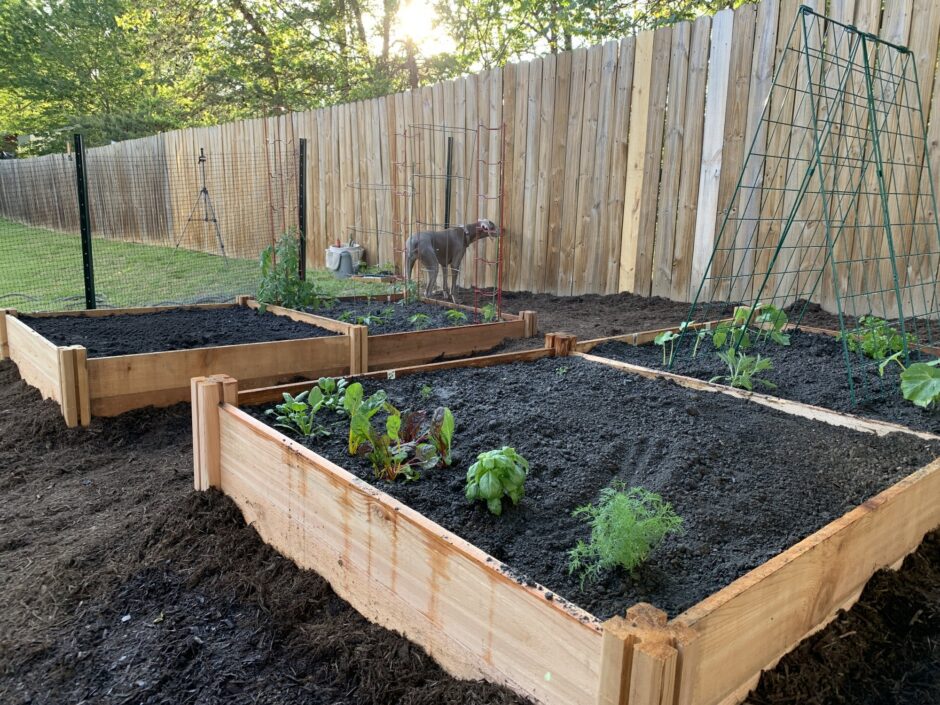
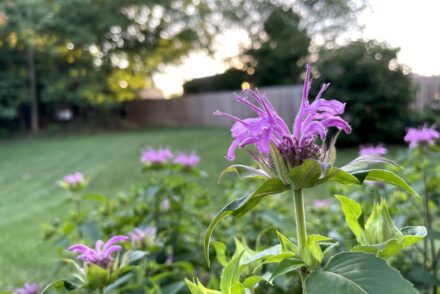
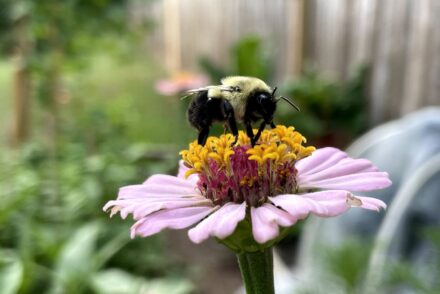
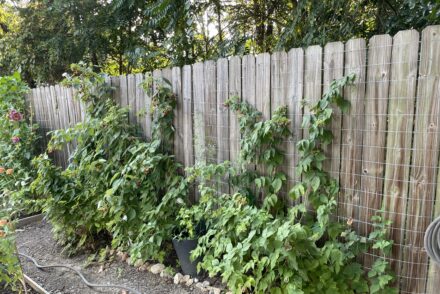
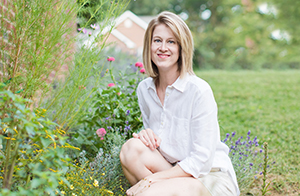
No Comments